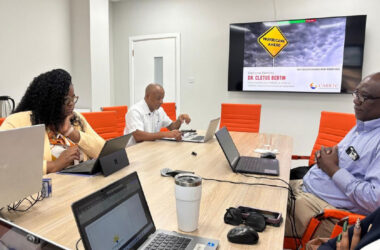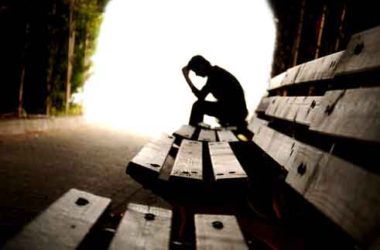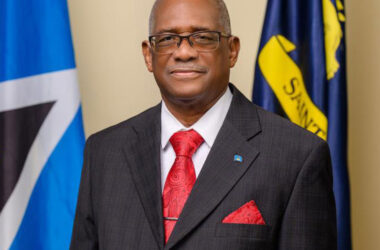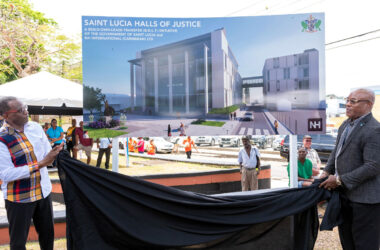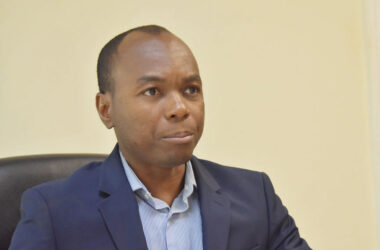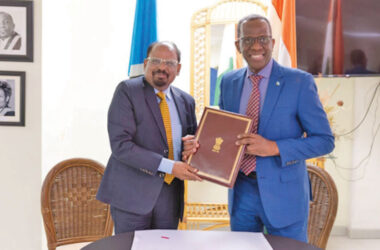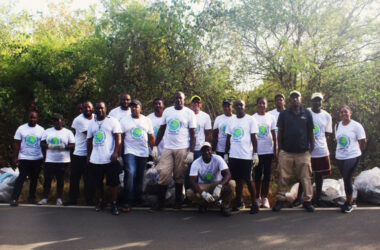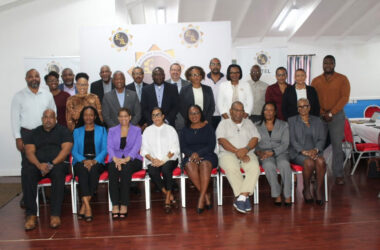ON Thursday evening (August 20, 2020), the Saint Lucia National Reparations Committee (NRC) and other local entities hosted here the inaugural lecture to launch its 2020-21 Online Reparations Lecture Series with a presentation by Monsignor Patrick Anthony on ‘From Black Power to Black Lives Matter – What Next for Reparations?’
The series is jointly sponsored by the NRC and the UWI Open Campus (Saint Lucia), the Nobel Laureates Festival Committee, the Sir Arthur Lewis Community College, the Office of the Saint Lucia Ambassador to CARICOM and the OECS and its Regional Integration Unit (RIU).
Also involved were the constituent member-organizations of the NRC, including the National Youth Council, the Monsignor Patrick Anthony Folk Research Center, the Archaeological and Historical Society and the Iyanola Council for Advancement of Rastafari.
Monsignor Anthony, an early liberation theologist with deep interest in History and Culture, called for “‘A Conversation on Reparations” to begin in Saint Lucia that is ‘truthful and honest’ and country-wide.
He recalled attending a seminary in Trinidad & Tobago in the 1970s during the age of “Black Power and the likes of Stokely Carmichael and Malcolm X carrying on the legacy of Marcus Garvey in the USA”, which were reflected in “the likes of Saint Lucia’s now-retired Jomo Primus”, who staged even one-man protests here and was arrested each time, at a time when demonstrations were not yet known.
Recalling the efforts of the Folk Research Center (FRC) in the early 1970s to address some of the island’s more pressing social problems through creative means like teaching literacy and Kweyol through classes in communities and Her Majesty’s Prison, Monsignor Anthony said the FRC sought to empower the local majority “by making Kweyol a weapon of resistance”.
He also said powerful signals were already being sent back then requiring conversations, but which were ignored.
He recalled St Mary’s College students “painting the statue of the Virgin Mary black” in protest and coupled that with national artist Dunstan St. Omer writing as far as back then too, that he did not accept the concept that Jesus Christ was white.
St Omer, who invented a color to paint Saint Lucia’s national flag, said accepting Christ was white would be in conflict with his knowledge of his being, which is why he opted to paint black images of Jesus, Mary, Joseph and the saints in local churches – first at Roseau and Monchy and then at the Cathedral of the Immaculate Conception in Castries.
The monsignor fast-forwarded to the present and recalled the recent attack on a crucifix in the south of the island by a young man who hurled firebombs at a cross near a church on a Sunday morning, during mass.
The scene reminded many here of the incident on the last day of 1999, when two young men attacked a congregation at the cathedral, doused many in kerosene and set flames that took two lives and injured many others.
Monsignor Anthony did not refer to that incident but suggested that the proposed ‘Conversation’ be so all-rounded as to include addressing the core reasons for such behavior continuing across and between generations.
Monsignor Anthony said the opportunities for early conversations were also missed back in the 1970s, but not in all cases as Caribbean Catholic Bishops in 1975 “confessed about closing their eyes to the injustices of the past, during and after colonialism, that helped deepen race and class divisions.”
He said they had “begged pardon from God and the people of the region for their sins of commission and omission” and adopted a 10-point Social Program based on Catholic social teachings.
Asking “What has changed?” the monsignor suggested much had remained the same and asked to what extent the region’s churches have contributed to the transformation of present societies.
He compared and likened the Catholic Church’s 1975 10-point social program to the 2020 demands of the National African American Reparations Commission (NAARC) and the 10-point plan of the CARICOM Reparations Commission (CRC) and urged they be revisited separately and together, as they had many like demands.
The veteran church leader and cultural activist also urged that whatever model is adopted by CARICOM for reparations “should include the best from all others that have contributed to the betterment of people of African origin.”
He also embraced the proposals of Sir Arthur Lewis in his Blueprint for Reparations contained in his book ‘Labour in the West Indies (1939)’
Saying that “Reparations means restoring all the dignity that has been abusively taken away,” the monsignor addressed his theme and said: “Black Lives do Matter, but it is Black Power that brought us here, so let us converse and not give up hope in despair.”
He continued, “The shade of your skin still matters in our minds and that is why Bob Marley encouraged us to not only liberate our minds from mental slavery, but also ourselves from the institutional structures” that reinforce racism today.
As to What Next, the Monsignor repeated his call for “A bold, radical and honest conversation on Reparations,” failing which “We will have more fire and that will not be good.”
Instead, he said, the conversation should lead to a process that will lead to ‘creation of a new humanity in Saint Lucia and the Caribbean.”
During his 40-minute presentation, Monsignor Anthony paid tribute to Michael Aubertin ‘The Mighty Mighty’, the winner of Saint Lucia’s 1979 Independence Calypso Monarch crown, who was also the author of the book on Saint Lucia’s runaway slave freedom fighters entitled ‘Neg Mawon’, who died a few days earlier.
He also paid tribute to the late Nobel Laureate Derek Walcott, who had written a special poem on the occasion that Barack Obama was elected President of the USA.
Monsignor Anthony said the USA had failed to deliver on its promise of ’40 acres and a mule’ to African Americans over the decades, which demands were not met after blacks were given ‘all 50 states’ (under Obama) – which, he said, was “one of the reasons why there is all this upheaval in the USA” and for like reasons in the Caribbean and elsewhere.
The inaugural lecture in the national series received greetings from the CRC, CRR, The UWI and the CARICOM Secretariat.
Meanwhile, the year-long lecture series continues next month with the September one to mark the start of a parallel 12-month series for schools aimed at students and teachers here and across the region.
It will be delivered by Professor Verene Shepherd, head of the UWI’s Reparations resource Center and Vice Chair of the CRC, who is also centrally involved in advocacy to keep history on the regional schools curricula and to encourage students to also embrace Reparations as a CXC, CAPE and CSEC subject.
Both series are being broadcast online and will involve local, regional and international presenters.



